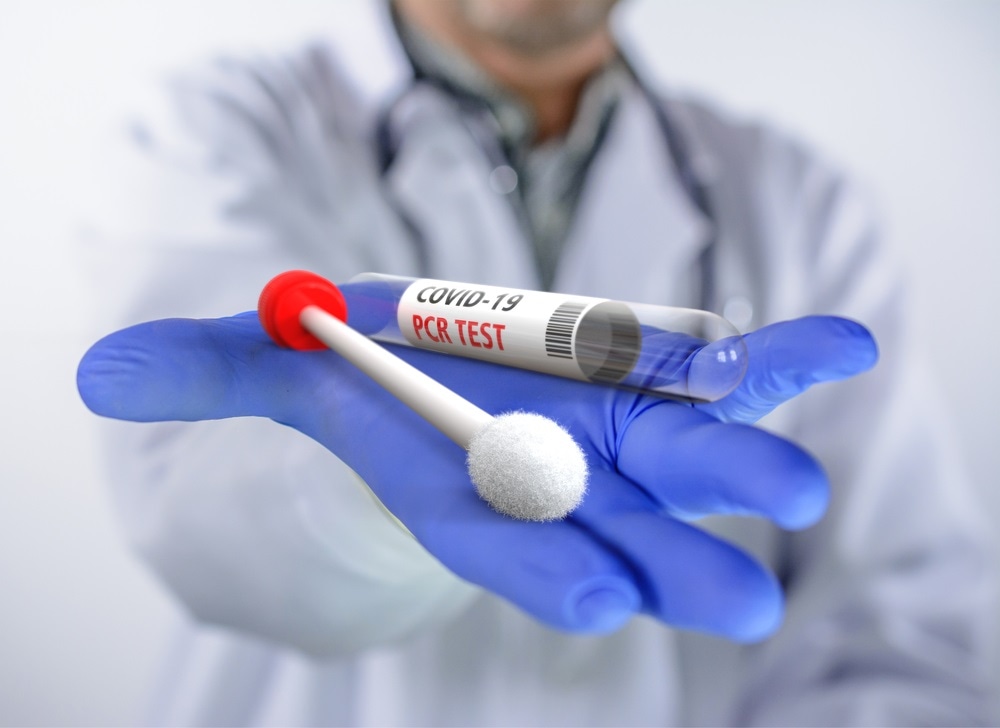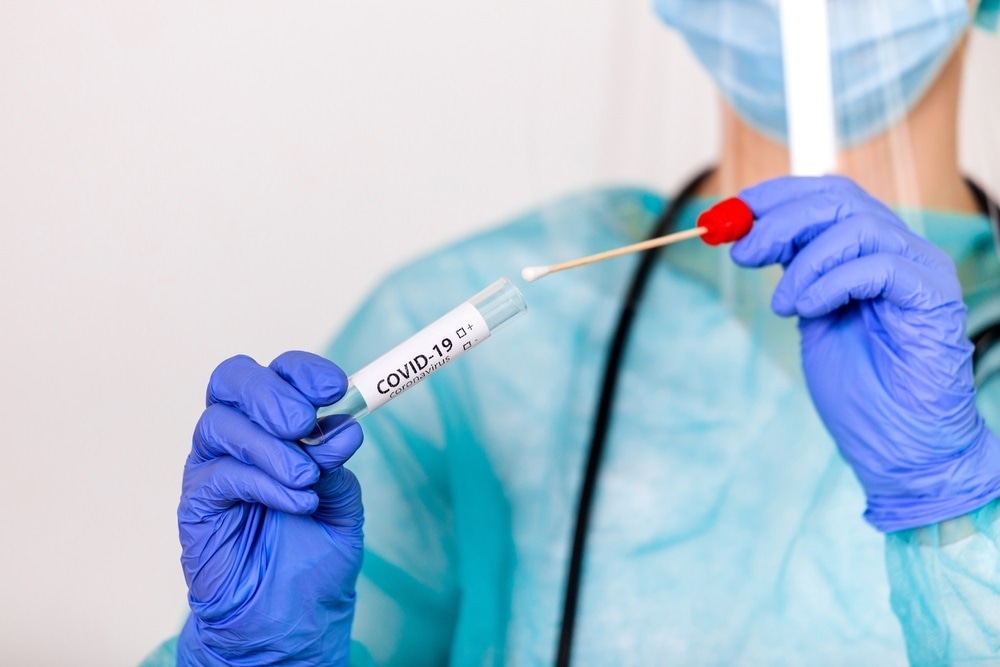In this interview, News-Medical Life Sciences talks to Curtis Knox, Sr Strategic Portfolio Manager at Promega, about using the XpressAmp™ direct amplification reagents to optimize laboratory processes by skipping extraction steps in the PCR workflow.
Can you give a brief summary of what direct PCR is and its benefits?
Direct PCR means amplification of a nucleic acid target directly from a sample without having to first extract that nucleic acid from the sample. Direct amplification is a simple, fast method that requires minimal up‐front sample processing and allows a laboratory to skip time‐consuming nucleic acid extraction steps.
What is PCR inhibition and assay sensitivity, and why are they challenges of Direct PCR?
Many samples contain contaminants that can hinder a PCR amplification assay performance. These contaminants or inhibitors can cause a decrease in assay sensitivity, a false‐negative result, or assay failure.
A typical PCR assay workflow includes a nucleic acid extraction step that removes these potential PCR assay contaminants. When implementing a direct PCR method, however, you are skipping the nucleic acid extraction step. Therefore, it is important that a direct PCR methodology includes the ability to overcome sample contaminants.

Image Credit:Shutterstock/giovanni canermi
How does the XpressAmp™ Direct Amplification Reagents product provide solutions in laboratory use?
The XpressAmp™ Direct Amplification Reagents provide a method that enables labs to skip extraction steps in their PCR workflow. This saves both time and cost and offers an alternative to extraction‐based methods in situations where extraction reagents may be in short supply.
In its simplest form, the XpressAmp™ kit can be used without heat steps and requires only a 10‐minute incubation. A lab can simply mix the sample with the XpressAmp™ Lysis Buffer, incubate, and then transfer the sample directly into a qPCR reaction containing the XpressAmp™ Solution.
Is there a specific example of how XpressAmp™ can be used in the laboratory to perform rapid direct PCR (e.g., research or industry applications)?
We first designed XpressAmp™ as a response to the COVID‐19 pandemic, but we have subsequently demonstrated its compatibility with other viral targets (e.g., Flu, RSV) and we are rapidly expanding the breadth of compatible sample types and product applications.
The XpressAmp™ Direct Amplification Reagents are general purpose reagents, intended for general laboratory use, and are suitable for use as a component of molecular diagnostic assays, where applicable country laws allow.
XpressAmp™ is backed by Promega’s 40+ years of amplification experience. Can you list some of the strengths or advantages XpressAmp™ possesses?
Leveraging our 40+ years of experience in both sample preparation and sample amplification, especially our work with challenging samples such as forensic crime scene evidence, we sought a solution that would allow the PCR analysis of samples without first performing RNA extraction.
The result is a direct amplification method that does not require specialized equipment, minimizes the use of consumable plastics such as microcentrifuge tubes or pipet tips, and can be performed without heated incubation steps. The XpressAmp™ Direct Amplification Reagents simplify your workflow and accelerate the time to qPCR results.
Why are rapid turnaround and simple workflow important to biomedical laboratory work?
It comes down to efficiency, turnaround time, and supply chain confidence. By combining a simple and fast workflow with minimal reliance on specialized plastics, sample throughput will increase and result in a faster sample‐to‐answer. This became especially important in responding to the COVID‐19 pandemic, where time-to-results was an essential part of trying to control the spread.

Image Credit:Shutterstock/ker_vii
Why is it important for XpressAmp™ to be compatible with downstream PCR amplification?
We designed the XpressAmp™ reagents to be compatible with a wide variety of downstream PCR reagents and amplification methods. We did not want to limit the potential of this new sample prep methodology to be constrained to only Promega amplification reagents.
We saw value for our customers in designing a direct amplification sample preparation product that would be compatible for use with amplification reagents already being used in their laboratories. Our goal was not to create a method that forced users to work solely with Promega PCR master mixes, but instead to enable rapid response to the current and future pandemics that may occur, regardless of the downstream reagents used.
How did the COVID‐19 pandemic impact the development of XpressAmp™?
The XpressAmp™ reagents were developed much faster than our typical process, as we understood the urgency of responding to the pandemic and the associated extraction kit shortages. We accomplished this by heavily relying on our experience in amplification of nucleic acids from challenging samples and by combining existing reagents in a unique way to address the problem as fast as possible.
Why is XpressAmp™ such a valuable development right now, especially in the middle of a worldwide pandemic?
Speed to result, especially in an environment with evolving supply issues for different parts of their testing workflow, is still relevant as we continue our response to the global pandemic.
Our XpressAmp™ reagents simplify a laboratories’ work, enabling them to report results faster. While we designed the product as a response to COVID‐19, we know that by simplifying a testing workflow, these reagents can serve a greater purpose for a wide variety of applications.

Image Credit: Photoroyalty/Shutterstock.com
What are some examples of scientific and biomedical industries that XpressAmp™ can impact?
Any sample type that requires nucleic acid extraction could be a target for the XpressAmp™ Direct Amplification Reagents. Infectious disease, environmental testing, genotyping plants or animals, or even blood or pathology samples may be compatible. We regularly work with collaborators to establish new methods using the reagent set.
Walk us through the process of lysed sample to RT‐qPCR amplification containing XpressAmp™ solution.
The process is very simple. For a viral sample contained in Universal Transport Media (UTM), the user will mix the UTM sample and the prepared lysis buffer in a 1:1 ratio and incubate at room temperature for 10 minutes.
The lysed sample will then be transferred into a prepared qPCR master mix containing the XpressAmp™ Solution and placed in a thermal cycler for amplification and subsequent analysis. It takes approximately 15 minutes to go from the sample to starting your amplification reaction.
What do you see for the future of biomedical research and development due to the benefits/strengths of XpressAmp™?
The development of direct amplification methods can help laboratories speed their research and testing. Breaking through the bottleneck of sample extraction will enable these users to focus on other areas of concern, use fewer plastics, and turn around results faster.
When the next infectious disease health crisis arrives, the world will be better prepared to respond with the availability of direct amplification methods like XpressAmp™.

 For more information on the XpressAmp™ Direct Amplification Reagents, visit the product page.
For more information on the XpressAmp™ Direct Amplification Reagents, visit the product page.
About Curtis Knox
Curtis Knox is the Senior Strategic Portfolio Manager at Promega.